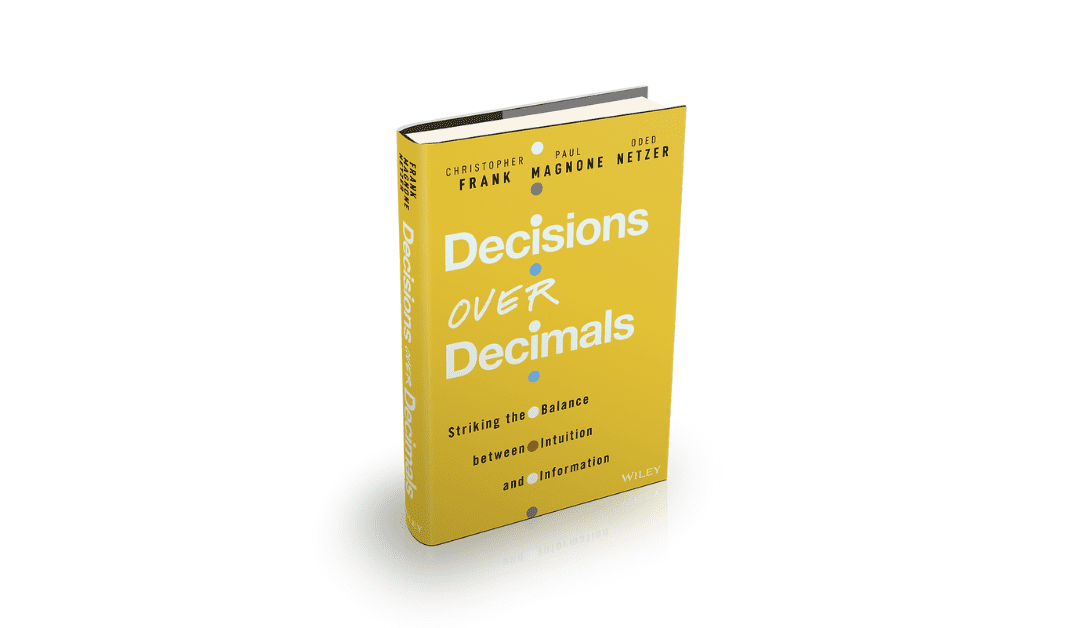About the authors
Christopher Frank, Paul Magnone and Oded Netzer are ‘veterans’ of the business world. They have worked with Columbia Business School and American Express, Google, and Amazon, respectively.
The key elements of the book
Data has always been pivotal in decision-making, but today it has a tendency to trump the intuition and experience of leaders. “Decisions over Decimals” is a guide to decision-making in today’s world. It offers techniques for combining quality data with instinct and common sense. The authors have developed an approach called “Quantitative Intuition” (QI) that helps to make better choices based on data.
Chapter by chapter, we find a lot of information and tips, including:
- Starting with questions. We can’t expect data to provide both questions and answers: one has to clarify what they are deciding before knowing what data they need. It is good to invest time in this process, by asking oneself and one’s team a series of linked questions, for example. Why do we want to conduct this study? A possible answer could be to get to know one’s customers. And why do we want to get to know them? So on and so forth.
- Check the data. Starting with asking the right questions will allow people to understand which data they need to focus on. The next step is to verify that these questions are indeed the right ones. The authors suggest starting with a series of questions called IWIK – which stands for ‘I Wish I Knew’ – designed to obtain data that is actually relevant for the decision one has to make. Once these questions have been collected, it is necessary to ‘test’ them with other questions. Are these questions accurate? Do averages and medians have the effect of not showing outliers? Is the time period considered relevant? Remember that what matters is not the data itself, but its meaning.
- Thinking about action. Data must always be interpreted thinking about the way in which it influences the decisions one has to make and the actions that follow. It’s important to move from: “What does it mean?”, to: “What are we going to do about it?”. One can start by agreeing with all stakeholders on the objectives and timing of the decision, then ask oneself whether the choices one is about to make are reversible, or whether one can make them so.
Conclusion
The book shifts the focus of decision-making from data to people, emphasizing the fact that, sooner or later, choices have to be made, and it is better to always make good choices, with or without ‘perfect’ data at hand. In this view, the most capable leaders are those who manage to balance data with experience and intuition.
